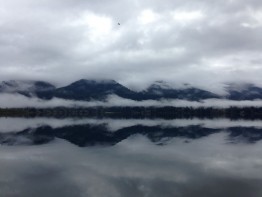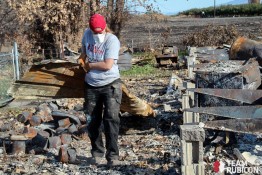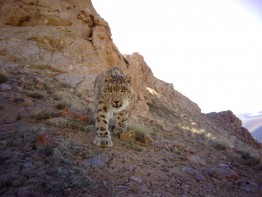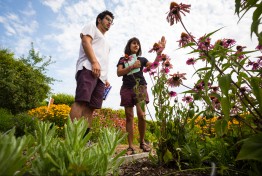NASA and UW researchers are deploying a massive array of instruments Washington's Olympic Peninsula to improve local forecasts and ground-truth satellite data.
Read more at UW Today »Natural Hazards and Resilient Communities Lecture Recap: Team Rubicon's Jake Wood
Jake Wood was submitting applications for MBA programs when a magnitude 7.0 struck Haiti in 2010. Having just returned from tours in Iraq and Afghanistan, he was surprised by the similarities between the news footage from Port-au-Prince and what he had seen on the ground, during times of war as a marine. Unable to plug-in with traditional disaster relief organizations, who preferred monetary donations over extra hands, Wood and three friends charted their own path to Haiti and beyond.
Read more »School of Forest and Environmental Sciences Student Involved in First Snow Leopard Collaring in Kyrgyzstan
School of Environmental and Forest Sciences doctoral student Shannon Kachel was recently involved in the capture and first successful satellite collaring of a snow leopard in Kyrgyzstan. The female, estimated to be between six and seven years old, was caught near the Kyrgyzstan-China border in Sarychat-Ertash Strict Nature Reserve. Snow leopards are among the most elusive and least studied of the big cats, and are listed as endangered on the IUCN Red List of Threatened Species.
Read more at SEFS' Offshoots blog »Natural Hazards and Resilient Communities: Q&A with UW’s John Vidale
The UW’s John Vidale is a man of many titles—professor of Earth and Space Sciences, director of the Pacific Northwest Seismic Network, and Washington state seismologist. More recently, Vidale helped launch the university’s M9 Project, a cross-disciplinary effort whose goal is to reduce the catastrophic potential effects of a Cascadia megathrust earthquake. Earlier this year, an article in the New Yorker stirred up panic nationwide over the looming possibility of megaquake along the Cascadia Fault.
Read more »2015 UW Doris Duke Scholars Share Their Conservation Stories
Undergrads from across the country reflected on nature, conservation, social justice, and their own backgrounds at a recent Doris Duke Conservation Scholars event, bringing together a range of experiences with a singular focus: the need for inclusive conversations around the future of our planet.
Read more »





